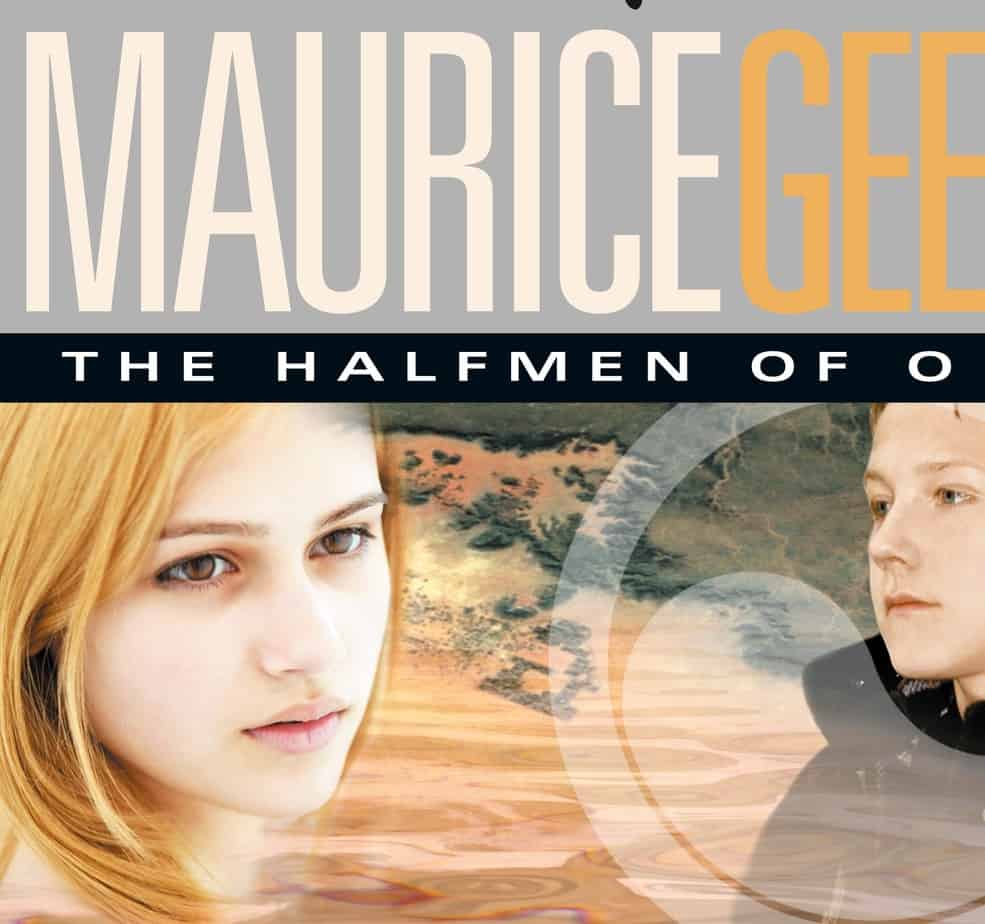The World of O is a trilogy of fantasy novels by New Zealand author Maurice Gee published 1982-1985. The Halfmen of O (1982) is the first of the series. We might call this series The New Zealand Chronicles of Narnia with a bit of sci-fi thrown in. There are also tropes recognisable from The Wonderful Wizard of Oz.
SETTING OF HALFMEN OF O
The real-world setting of The Halfmen of O is familiar to me. I was three years old when the first book came out. During the 1980s my family lived 1 hour 20 minutes along the SH60, first in Motueka, later in Nelson.
Years after moving to Christchurch, over the New Year of 2001-2002, I walked the Heaphy Track with friends. The Heaphy Track is one of New Zealand’s great walks (and also the longest). We started at the Collingwood end, where this story is set. The Christmas/New Year period is a notoriously unsettled weather period in New Zealand so it rained every day of our tramp except the first day, which is straight up hill.
Due to wet tramping boots which hadn’t been properly broken in, I lost the skin off the soles of my feet. I was carrying a pack which was a third of my weight. I was also stupid for accidentally leaving my two dry sets of clothing at one of the huts. Tramping the Heaphy Track was a memorable experience, to be sure. I am left with excellent memories despite all that.
I never did read Maurice Gee as a kid, so delving into these books is not a return to my childhood fantasy world. It is, however, a nostalgic return to my homeland. There weren’t many stories set in New Zealand when I was growing up, let alone stories set at the top of the South Island. This trilogy is special.
Importantly to the story, Collingwood (Aorere) is near historic gold mining sites. The short-lived and underwhelming gold rush accounts for why colonialists call Golden Bay ‘Golden Bay‘. (In Māori Golden Bay is Mohua.) Abel Tasman had named it Murderer’s Bay (but in Dutch). That’s because in 1642 Ngāti Tūmatakōkiri rammed the Dutch ship’s cockboat with a waka (canoe) and four Dutch seamen were killed by Māori.) I’m glad that name didn’t stick. As a kid, I thought Golden Bay had been named after the beautiful golden sands, but nope.
It seems Maurice Gee has taken a few nearby landmarks and amagamated them into a new, fictional place. As far as I know, there’s no Devil’s Elbow in Collingwood (though there is a Devil’s Elbow between Whirinaki and Tūtira in the Hawkes Bay). However, there are plenty of ‘Devil’ landmarks in the Tasman district, e.g. the rock formation in Collingwood known as the Devil’s Boots. It’s meant to look like a massive boot, I guess. The notion that the devil leaves his marks on the landscape is on old one, and pervasive. There’s also a Devil River Peak and Kill Devil Spur near there, so there could easily be a locally known Devil’s Elbow which doesn’t make it onto the maps.
Lodestone Creek is real. But locate it on the topo map and you’ll see just how far it is from the Aorere River. (The real Lodestone Creek is closer to Takaka than to Collingwood.) This is about as close as you can get to the imaginary Ferris farm on Google Earth. Gee has clearly used it because the aptronymic name of ‘lodestone’ is too good not to use.
Here’s a panorama view of the gorge area (taken from a bridge), which would’ve looked a bit different in the 1980s, with fewer tourist vehicles. My memories of growing up around here in the 1980s: far fewer people. Though more in January, of course. Summer holidays.
Although white New Zealand history feels short, it’s really not. There’s a lot of murderous, dark history in this part of the world, like almost everywhere else. This dark history comes out in Maurice Gee’s story, though not directly.
The darkness resides in the fantasy world, entered via the portal of a disused mineshaft. This fantasy world is devoid of colour, in contrast to the brightness of New Zealand, with its greenery, its frequently blue skies and yellow sun.
PARATEXT
When Nick Quinn goes to spend a couple of weeks on his uncle’s farm at Lodestone Creek, he expects it to be like every other summer holiday. His dopey cousin Susan is more remote than ever, but swimming and exploring will make up for the lack of companionship.
But Susan is spirited off down a disused mineshaft into the world of O, and is taken prisoner by Odo Cling and the Deathguard. Nick follows to rescue her and the Woodlanders of O come to his aid. They know that Susan is the only one who can save their world, and perhaps her own.
MARKETING COPY
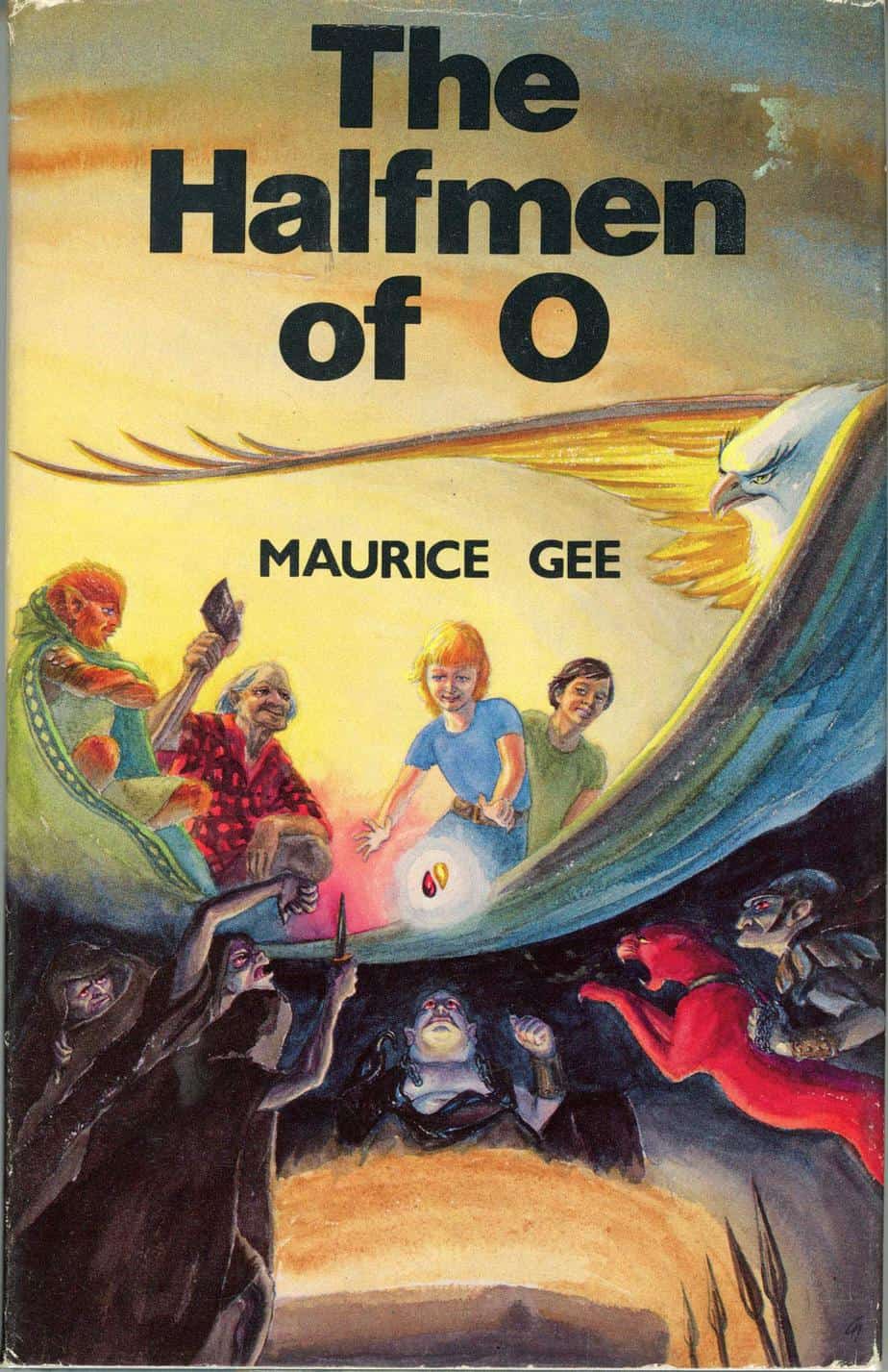
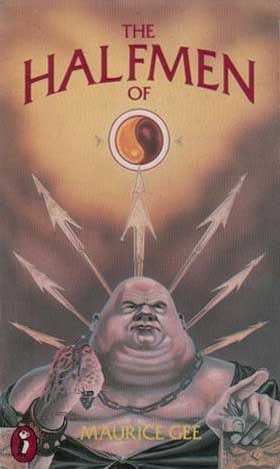
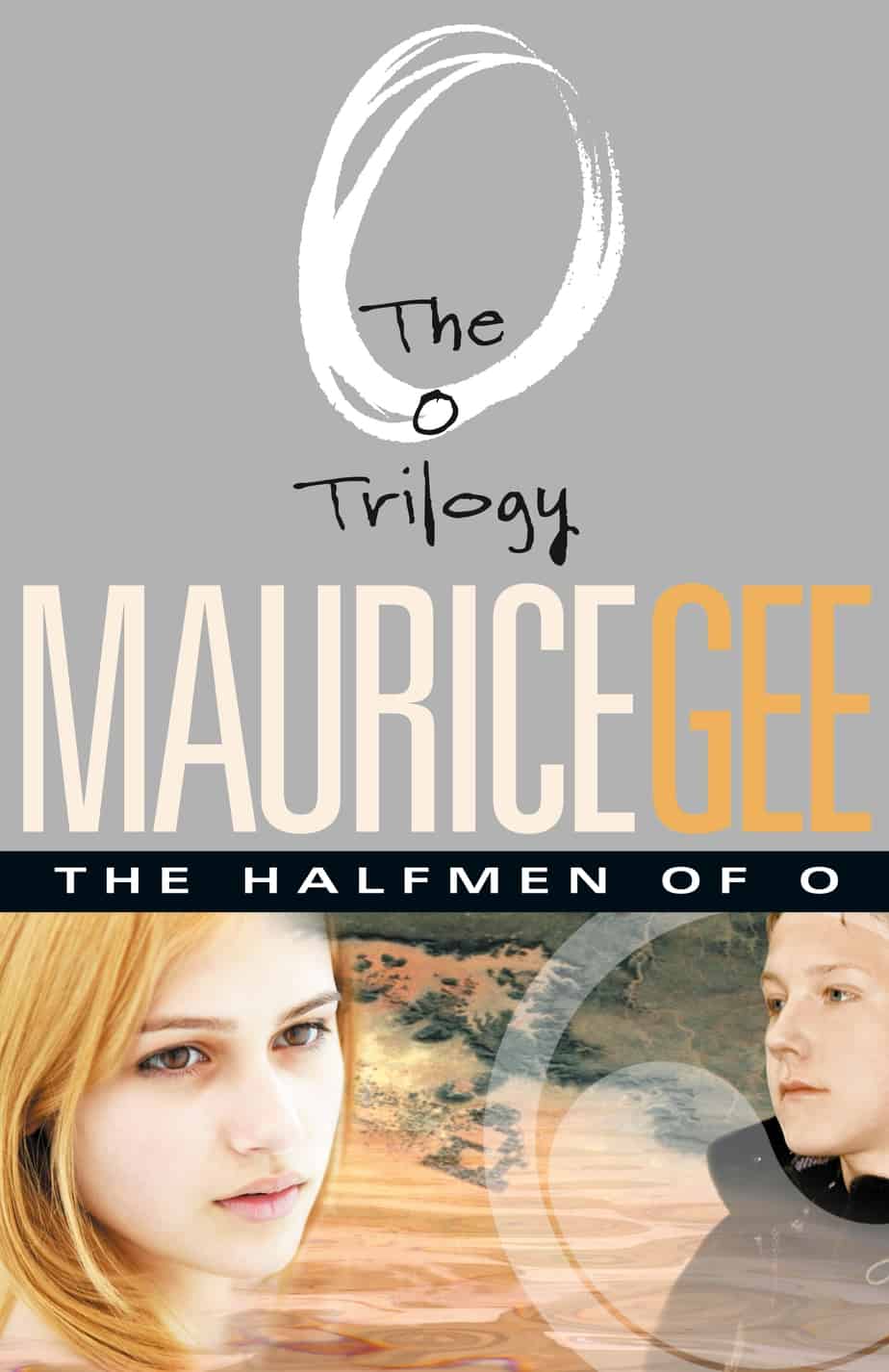
01 THE MESSAGE
CHAPTER SUMMARY
In early 1980s New Zealand, a 12-year-old boy goes called Nicholas Quinn with his parents on a two-week summer holiday from his home in Auckland (near the top of the North Island) to his cousin’s house near Collingwood, at the top of the South Island. Susan Ferris is widely regarded as a weirdo.
When Nick gets to his cousin’s house he finds her near the waterfall but Susan is rudely (or mysteriously) dismissive. She walks off, unimpressed about seeing him.
Nick meets a scary old man, prospecting for gold with a suction dredge from a make-shift motorised raft on the river. The ugly, scary old man guesses correctly that the kids are related, and demands to know where Susan is. Nick won’t tell him, and the old man is threatening, leaving bruises around Nick’s neck with his fingers. The man carves a pattern onto a skimming stone shaped pebble and tells Nick to give the pebble to Susan.
Nick has no intention of giving the ‘message’ to Susan; he plans to take it to the police. But when Nick catches up with Susan on the bridge, she seems different to him, more friendly, almost as if she is ‘hypnotising’ him. Nick gives the pebble to her as she instructs.
Nick can’t eat at dinner-time due to anxiety. His aunt accuses him of having the poor appetite of a city kid. (Being a city-kid is what defines him out here.)
He falls asleep briefly but is woken by the annoying whine of a mosquito. Thirsty, he gets back out of bed for a drink of water. The adults have been drinking and are talking about Susan. Susan’s parents tell Nick’s parents the story of the old man who Susan’s mother found standing near Susan’s cot when she was a baby. She is convinced this old man with a white beard and red, glowing skin (like an alien) put Susan’s birthmark on her, as she wasn’t actually born with it. Later, the old man — presumed to be a lone gold prospector — was found dead nearby after (supposedly) falling off a cliff. Sure enough, he had red skin. He also had a birthmark that matched Susan’s.
Nick realises that the mark etched onto the pebble he just gave Susan is a crude, scratched version of that matching birthmark. He plans to follow her the following day as she goes in search of the scary old man.
NOTES
The story opens with an overt narrator telling us a story, which we ostensibly share: “Our story begins on…” (Note the use of ‘our’.) This is shared lore.
The story also opens with a character called Nick who, for the next little while, is going to be telling the story of someone he is watching from a slight distance. In this respect, he is reminiscent of another fictional Nick: Nick Carraway of The Great Gatsby. Viewpoint characters tend to be reflective, observant people, capable of great empathy. Although he starts off feeling adversarial towards Susan, he will soon develop feelings for her.
‘As Brand was to say, Jimmy didn’t really understand evil.’ We don’t yet know who ‘Brand’ is, but already this plot reminds me of a completely different story from a more recent era: No Country For Old Men by Cormac McCarthy (turned into a movie by the Coen Brothers). In that story, too, a man with the shortcoming of greed is easily manipulated by a force much more evil than he can comprehend.
A man who searches for gold but never gets it fits the history of the real place of Collingwood; a tiny amount of gold prompted a gold rush to this part of New Zealand, which never amounted to anything. The old man fossicking for gold feels like an amalgamation of all those frustrated colonisers. He feels folkloric, from an earlier era.
Maurice Gee renders the old man’s speech by dropping letters, suggesting an earlier, more British-influenced version of New Zealand English. This isn’t done much today. Accent tends to be depicted via grammatical construction alone.
Maurice Gee establishes some city-kid vs. country-kid conflict on the first page. There’s a long history of such opposition in children’s literature. Typically, the sophisticated city kid goes on holiday to the country, realises the magic of nature, and understands for the first time that there are things country folk have to teach urbanites. They generally learn that humans are weak against larger forces of nature, and all of this stands in for the vagaries of weather. (Updated version: the vagaries of climate.)
Twelve-year-olds are popular main characters in children’s literature. This is the age we’ve collectively decided is the liminal time between childhood and adulthood. Nick has wanted to be a bit more grown up about his relationship with Susan this year, showing a desire for adulthood, and a wish to leave the bad things of childhood behind. Susan has planned for herself a different sort of coming-of-age story, which involves reconnecting with her people.
Susan is established as a witch-like character when she seems to ‘hypnotise’ Nick into both giving her the pebble and also into liking her. This pair are cousins, so this isn’t a romantic kind of love, but harks back to beliefs around women and their ability to control men with their beauty (coded as witchlike powers).
Nick faces a moral dilemma common to children’s stories: Something strange and possibly dangerous has been encountered. To tell the adults or not to tell them? He decides not to. Susan discourages him, and then he determines he can deal with this himself by following her.
When Nick gets out of bed and overhears the adults talking about Susan and the old man, this is an example of a story-within-a-story, or hypodiegetic narration. Usually when a child is trying to work out a mystery, part of it is solved by overhearing adults talk about something from the shadows.
Continuing with the witch tropes, birthmarks were dangerous if you lived during the Witch Craze. Marks on the skin of the accused could be regarded a witch’s teat (for suckling a familiar). Sometimes the story was different: A birthmark might be a mark made by the devil after a witch had sold her soul to him.
The image of the old man with the long white beard watching over a baby is remniscent of Scandinavian mythology. The tomte are what in English we often call ‘gnomes’ and are probably the inspiration for contemporary images of Santa Claus. The tomte are thought to watch over children and farms at night. They are benevolent. Maurice Gee plays with this trope for this Southern Hemisphere summer story by giving the creature red, glowing (possibly sunburnt?) skin, and by having Susan’s mother compare the man to an alien. This story now has the vibe of part folklore, part science fiction.
02 JIMMY JASPERS
CHAPTER SUMMARY
Nick is picking plums when he sees Susan duck out to find the ugly, scary old man. He follows her. He regrets wearing such bright colours as he is having trouble hiding. The man is easy to locate because of the horrible noise coming out of his dredge.
Jimmy Jaspers introduces himself to Susan then grabs her. She realises she’s been expecting the man with the white beard who put the birth mark on her, and this is not him. She tries to get away, so Jimmy Jaspers pulls out a small blue bottle and hypnotises her with some snake-like smoke which smells strongly of carbide.
Under the spell of the carbide, Susan wades through the gorge until she gets to an old mineshaft. Nick follows and tries to pull her back, but she feels her head is being pulled off, and Nick doesn’t manage to keep a hold of her.
Once in the mine, Nick relaxes knowing she can’t go any further, but then her eyes glow and she disappears into what Nick understands is a supernatural realm.
Jimmy Jaspers noises up and down the gorge, also pulled by the magic, supping on the potion which he says (aloud) is “better than whiskey”. He comes dangerously close to Nick. Nick avoids intoxication with shallow breaths.
Jaspers disappears into the mine, after calling out to the mysterious Halfies that he’s done his job, now he’s owed gold. Nick imagines horrendous creatures split down the middle.
He has no choice but to go into the mine shaft in the hope of saving Susan.
NOTES
Plums feature large in this part of the world. Margaret Mahy makes constant mention of them in her young adult New Zealand novel The Tricksters. This is a fruit growing area.
The image of the hygge farm with its fruiting trees is soon replaced with images far more sinister, eventuating in spatial horror, with an on-the-page simulation of vertigo as Nick chases Susan further and deeper into the gorge, hoping to catch her.
Susan’s mechanical, robot-like walking is also a horror trope which, interestingly, it shares with comedy. In this case it’s definitely horror.
Susan’s possession is also signalled with a change in her eye-colour from blue to reddish-brown.
When they make it through a narrow part of the gorge, they are through the first portal into the supernatural world. Rivers in New Zealand are surprisingly dangerous and catch people out. Trampers are frequently warned about how quickly rivers can rise. When Nick and Susan enter ‘black’ water up to their armpits, they are doing something New Zealanders are told not to do, and are in peril from the natural environment, let alone that creepy old man. (The aforementioned swing bridge indicates the need to avoid the river.)
Maurice Gee spends another sentence lampshading why Nick couldn’t possibly tell the adults about this: They simply wouldn’t believe him. This is a necessary few lines which crop up in many, many stories for kids. At the end of the chapter Nick realises he ‘is the only one who can bring her back’. This feels like a line out of Star Wars. “Help me, Obi Wan Kenobi. You’re my only hope”. I’m reminded of arguments against letting women serve in combat units: Because men are conditioned to protect women, and that’s not a dynamic the army wants to deal with. If that’s the case, the corpus of stories like these are helping with the conditioning.
All this while there’s a fantail fluttering around, seeming to guide Nick on his journey. This is straight out of fairytales cf. “Hansel and Gretel“, “The Juniper Tree” etc.
I noticed a similarity in the first chapter between this story and No Country For Old Men; the similarity continues as there’s a cat and mouse chase scene, with Jimmy Jaspers chasing after Nick, who is in a compromising position and easily found. He has to hold his breath underwater and make like a trout as the baddie edges very close.
Jimmy Jaspers takes a whiff of the yellow smoke coming out of the bottle and before disappearing, casts it aside. Nick picks it up. This will surely function as a magic potion which will help him on his travels — like something out of a computer game, he’s increased his ‘health bar’ by saving it. He’s also proving himself a worthy hero by resisting inhaling it himself.
At the end of the chapter we are about to learn who the Halfies are. Are they really as terrible as Nick imagines? That’s your cliffhanger.
03 ODO CLING
CHAPTER SUMMARY
Susan has a rebirthing experience and wakes up in the same shaft but on the other side of the portal, in a world which has no colour. A slight but scary man is there to greet her. She realises she’s surrounded by his minions. Two of them are encouraged to touch her birthmark. They are both deeply affected by it. Susan’s magic is proven this way.
Susan is the last powerful person left from the other side. These creatures call humans ‘Mixies’.
With Susan as prisoner, they embark upon a five day journey to Darksoul where she will be presented to someone called Otis Claw. The landscape is as if everything has been burnt. Even the sun is black.
Susan accidentally contributes to the death of one of Cling’s minions when he tries to help her on a steep part and accidentally touches her Mark. He is thrown to his death.
As punishment, Susan is now throttled — tied at the neck as she marches. One move and she’ll be asphyxiated.
Later, in the night, her captors sleep and she notices other figures around. They are wearing lighter coloured robes. Eventually they arrive to save her, having doped the baddies with ‘stink pads’ (as Odo Cling calls them). But Odo declares himself immune to the stink pads and tries to seize Susan back for himself. Susan has learned from the earlier experience that if these guys touch her wrist, she can overpower them. So she presses her Mark to Odo Cling, who goes flying.
One of the men in the robes is revealed as Nick, who she realises has come to save her.
NOTES
The third person narration now follows Susan.
In The Giver by Lois Lowry, we don’t know until partway through the book that Jonas’s world is devoid of colour. This world is described as black and white from the get-go, except for Odo Cling’s red eyes. Nightmares are sometimes painted in black and white, or with desaturated colour. Do you dream in colour? I couldn’t tell you if I do or not, though I’ve talked to people who say the colour of their dreams is more vivid than reality.
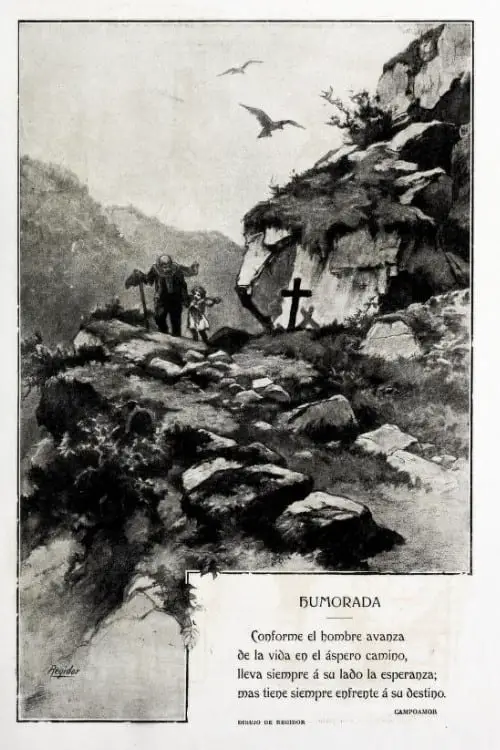
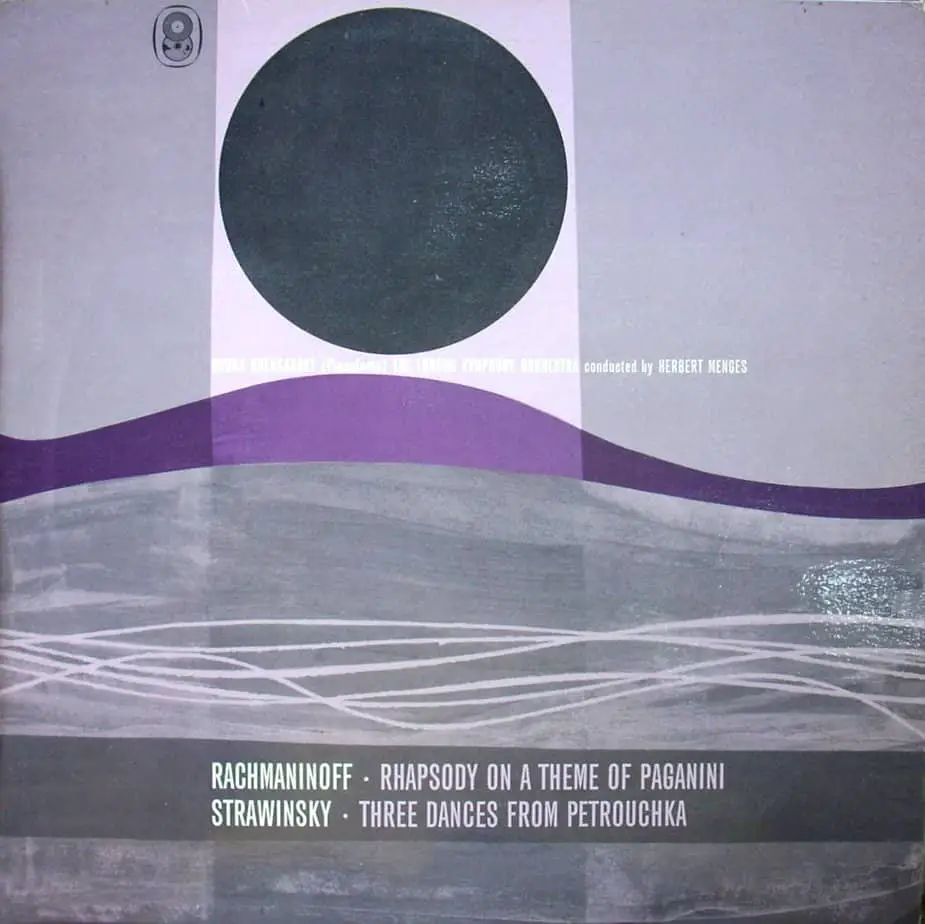
Odo Cling has a touch of emo about him — he’s ruler of a place where ‘pain is truth’. He is also very clearly power hungry and also a sadist, making him an outright evil villain.
Maurice Gee makes use of ‘black hat, white hat‘ dualism when he colours the robes. Odo Cling’s men wear darker robes than the crew who come to save Susan.
Notice how similar the set-up is to Narnia. A girl enters a fantasy land attached to our real world, where instead of winter, everything looks burned, and the world has been overtaken by an evil force. But there is a distinctly New Zealand feel to this story. Susan uses a comparison of fencing wire (fencing wire is a feature of rural landscapes) and the bird which has come to lead her to safety is a morepork. This bird is also called the ruru or Tasmanian spotted owl. It is a small brown owl found throughout New Zealand and Tasmania. Its hoot sounds to English speakers like it’s saying “Morepork! Morepork!” At least, that’s what my mother taught me. I don’t think so. They do, however, have a distinctive call.
In Māori tradition the morepork was seen as a watchful guardian. It belonged to the spirit world as it is a bird of the night. Although the more-pork or ruru call was thought to be a good sign, the high pitched, piercing, ‘yelp’ call was thought to be an ominous forewarning of bad news or events.
New Zealand Birds
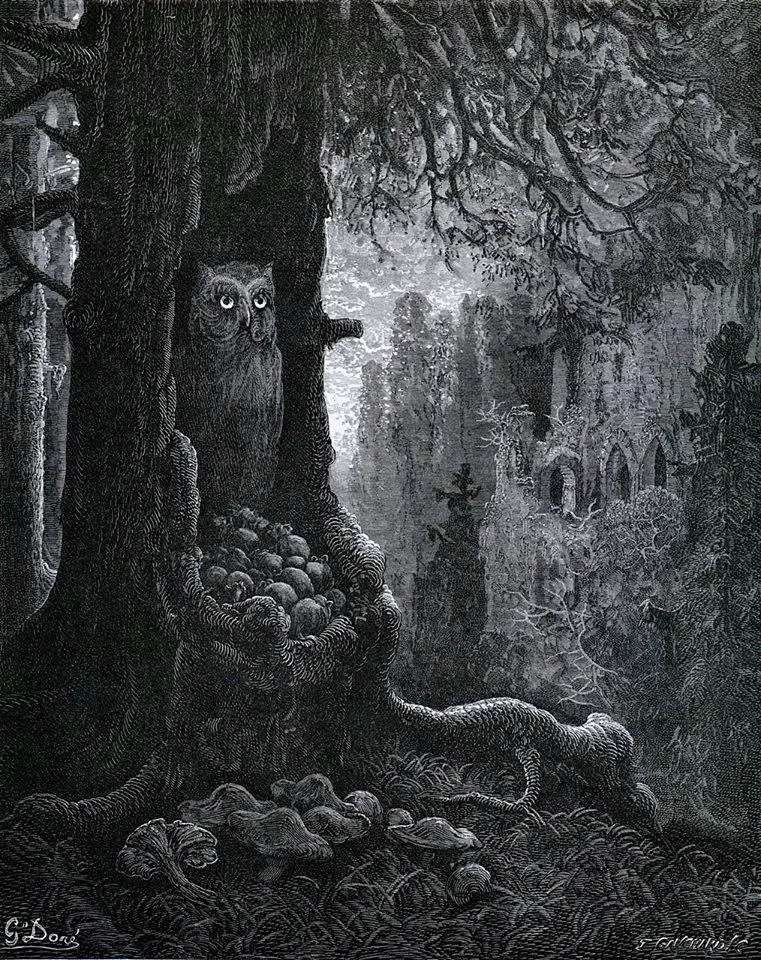
04 THE WOODLANDERS
CHAPTER SUMMARY
Susan is glad to find she’s got goodies on her side. They call themselves the Woodlanders. Brand is their leader. He explains that the Deathguards will be after them in no time, after picking up some more weaponry.
Dawn is rising, but it’s time for the Woodlanders to sleep. Brand leads them to a grassy patch, which would be beautiful if it weren’t grey. Other Woodlanders arrive from having led the Deathguards all over the show, making fake trails. This gives the Woodlanders time.
We learn that Nick and Susan must reach Marna’s Cave by tomorrow’s nightfall.
Nick reveals that he found Susan by pinching Jimmy’s potion, which allowed him to enter this world. Susan has worked out that he made a noise like a morepork to let her know he was there. They guess Jimmy Jaspers is dead. The Woodlanders had been watching this whole thing play out from nearby, and approached Nick when the coast was clear.
A Woodlander called Breeze has medicine woman skills she learned from the yet-to-be-explained Marna. She heals Susan’s whip wound with a fruit like a lemon, and explains that ‘only those who have lost their natures’ are unable to touch Susan’s birthmark. Woodlanders don’t need to worry.
Breeze also fixes Susan’s eyes so that she can see their world in technicolour. It’s the yellow smoke of the potion which prevents visitors from seeing colour in this world. (Nick has already had his vision fixed.)
They reach Marna, wife of Freeman Wells. She has been waiting for the children for ‘many years’. Marna is a Halfie, and therefore cannot touch Susan’s birthmark like the Woodlanders can.
NOTES
“I was born here. I shall die her. For me there is no other world than Wildwood. I know every tree. I know every blade of grass.”
Brand, The Halfmen of O
In this chapter, Maurice Gee is setting up a chase. This gives the work narrative drive.
Brand is a Pan-like character, Greek demi-god of nature. We see this character across classic children’s literature, including in The Wind In The Willows and in The Secret Garden.
Brand explains that once the river called Sweet Water was “sweet all the way down to the sea”. He is describing a lapsarian setting, and lapsarian settings are all descendents of the Garden of Eden story: Once, everything was perfect. Then bad people came and ruined everything for all of us.
Brand has all the answers, presumably, and Susan asks him who all these characters are. But because there’s a ticking clock (embedded in the chase), Brand has no time to explain who exactly Otis Claw is at this point, or what Halfmen are.
The World of O has concepts in common with the Classical myths about the Underworld, which for the Ancient Greeks was surprisingly detailed — about as detailed as this world. The World of O features a ‘vanishing stream’, which reminds me of the various rivers of the Underworld: The River of Woe, River of Lamentation etc. At this point, the ‘vanishing stream’ reminds me most of one of the pools in Erebus: The Ancient Greeks did not like to say the word Hades because they were so scared of him, so they made up many euphemisms. Erebus often referred to Hades himself, but is also a realm of the Underworld (ruled by Hades) which lies beyond the Asphodel Meadows. In Erebus you find two pools. One of the pools was in the River Lethe (one of the Five Rivers of Hades). This is where ordinary dead people would go to erase all memory. There’s also the pool of Mnemosyne (“memory”). This is where the initiates of the Mysteries drank.
It makes sense that The World of O feels like an Underworld. This is a place on the way to death. Its inhabitants have already lost their sense of taste and ability to see colour; this is metaphorically a kind of purgatory.
The goodies and baddies in this story are divided between those who have ‘lost their natures’ and those who have kept some essence of themselves. Though the religious word is not used, this is the concept of the soul. The idea that one’s soul can be lost has a long, long history in stories about selling souls to the devil in exchange for some worldly pleasure (or power).
“Never eat this fruit,” Breeze cautions Susan, “or the leaves. Only when they are brought together do they become whole.” This telegraphs one theme of this book: Unless the initially estranged cousins Nick and Susan can learn to work together, they won’t get out of this hell.
When Susan learns to see in full colour, this parallels the Narnia story of snow starting to melt, giving way to spring.
Marna at first felt a bit like a Wizard of Oz character, except we’ve met her already. She’s more like an Aslan character. Like Aslan, the children are afraid to approach her. Both Marna and Aslan are deeply sad Jesus characters. (Note with interest that she is introduced by her relationship to a man.)
The existence of a character who has been ‘born into bad’ but ‘chosen good’ exemplfies a world view that one can always choose the good path. This is a simple, dualistic view of the world, and puts aside messy complications such as privilege and acculturation. The implication is that the Halfies could have chosen the good path if they had wanted to, and so whatever punishment comes their way is deserved. We are not to feel sorry for them.
05 MARNA
CHAPTER SUMMARY
Marna feeds the Woodlanders, Susan and Peter. Since they’re all sitting down and eating, they’re in a good position to hear the backstory of this world and their mission.
First, we find out what happened to Jimmy. Jimmy Jaspers is recuperating in one of the alcoves of Marna’s cave. Marna has fixed his knife wounds and given him some potion which has helped him to repent. He is now very sorry for trading the children off for gold. But he is still salty. He wants to exact revenge on this Otis Claw for tricking him.
It is revealed that Freeman Wells is the late husband of Marna, and the old man who put the mark on Susan, later found dead. We also learn he did not ‘fall’ off the cliff; the Halfies murdered him. (We probably gathered that.)
We learn along with the children the evil backstory of Planet O. Long ago, Freeman (or Firstman) set the world in balance by setting two tear-dropped shaped stones into a Motherstone. This was guarded by some Wise People. One of those admitted to this select group was a guy called (at the time) Otis Hand.
Odo Cling is not the Minotaur opponent of this story, but instead has the irritating power of ‘a yapping dog’ in comparison to Otis Claw, as he is now called. He was once a student of Freeman Wells until he was entrusted with the two halves of stones. After a taste of power he chose the dark side. He wanted to control everything and everything. This story features several layers of ‘bad’. If we look at the Stone Scale of Evil (the stone connection is pure coincidence),
To do that, all he had to do was separate the two halves from the Motherstone. He wore them around his neck so no one could get them.
Freeman managed to grab the halves from around Otis’s neck. Meaning to put them back on the Motherstone, for the time being he left one half with the Stonefolk, the other half with the Birdfolk for safe keeping.
This descent into evil on Planet O had a direct effect on humans, who then started their own struggle between good and evil.
On Planet O, the evil guys hunted down every Halfie who chose good until they were dead. Except for Freeman Wells and his wife Marna, that is. That’s how Freeman ended up dead himself. He had entered the human sphere to recruit a band of humans who might help him restore the balance between good and evil. Freeman was able to mark Susan before be was killed, and it is now up to Susan to save everyone but reuniting the Halves with the Motherstone.
The human kids can’t return home because there are guards at the entrance to the portal. Also, Susan is the only one who can save Earth from eventual suffocation via pollution.
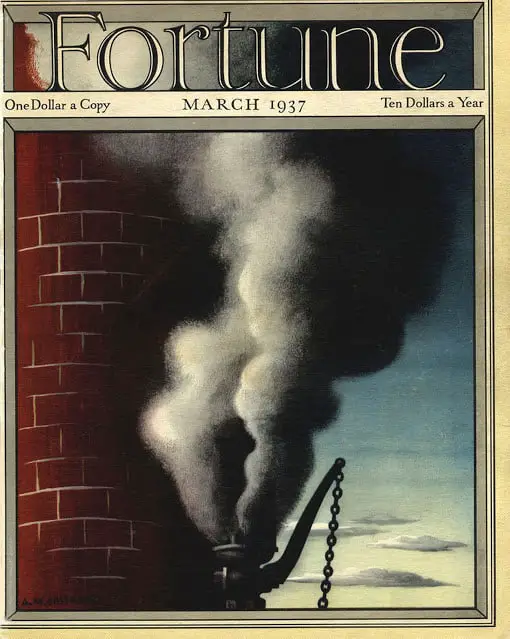
They all sleep in Marna’s cave, but at dawn a woodlander rushes in to exclaim that Otis Cling has sent 100 men and a Bloodcat for them.
NOTES
The Halfmen of O is clearly a Chosen One story. That said, Susan hasn’t been chosen for her bloodline. She was ‘chosen’, I guess, because she was proximal to the portal into Planet O. There are questions might ask at this point: Why did it have to be a baby? (In which case the whole planet would have to wait until she grew up before she had a hope of saving anyone). Gee lampshades this by making Nick angry about this decision (so the reader doesn’t have to be).
“Marna” is the ‘backstory’ chapter that challenges a non-fantasy reader. My question when reading magical stories is always something like this: If Freeman had the power to put a mark on someone and anoint them as Chosen, why did he not have access to other magic which could have saved everyone differently? (There are fantasy readers and then there are people like me.) Fantasy readers just have to accept that magic works a certain way and not in other certain ways, and it’s not for us to know the whys and wherefores.
Marna is the archetypal witch healer or ‘wise woman’. The magically medicinal properties of fruit is utilised as part of that. Marna seems to be cooking everyone’s food in a cauldron, though if we’re talking about the real religion of Wicca, cauldrons aren’t used for food; they’re herbalist witches and, even in stories, cauldrons are traditionally used for cooking up potions rather than food. When they are used to cook food, the food will probably have magical restorative powers.
This healing wise woman witch is a modern witch archetype. She grows herbs in her garden and is (to modern audiences) harmless, perhaps genuinely healing to those who dare visit. In reality, the midwives during the Witch Craze were more likely to side with the persecutors. Also, women accused of witchcraft were often married with young families to care for, and quite likely accused of witchcraft by another woman. (We know this from evidence given by women at trials.) The midwives were the Aunt Lydias, regulating rather than liberating women’s bodies and sexuality. They were in a good position to search for witch marks, or determine whether a woman was pregnant or not, at the behest of state power. Just because the midwives had great knowledge about women’s bodies it doesn’t naturally follow that they were using this knowledge for good. The concept of the witch as healer is worldwide e.g. Spanish curandera, ‘female healer’ (witch).
Marna tells Jimmy Jaspers that revenge against Otis Claw would only bring out the evil side in him. Susan’s birthmark is earlier described as a yin yang shape, a visual representation of how seemingly opposite or contrary forces may actually be complementary.
Despite that similarity, the story’s message about revenge is from the Christian tradition, not from Eastern thought. In the Bible, the Apostle Paul says , “Bless those who persecute you; bless and do not curse. Do not repay anyone evil for evil. Do not take revenge, my dear friends, but leave room for God’s wrath, for it is written: “It is mine to avenge; I will repay,” says the Lord. (Romans chapter 12.)
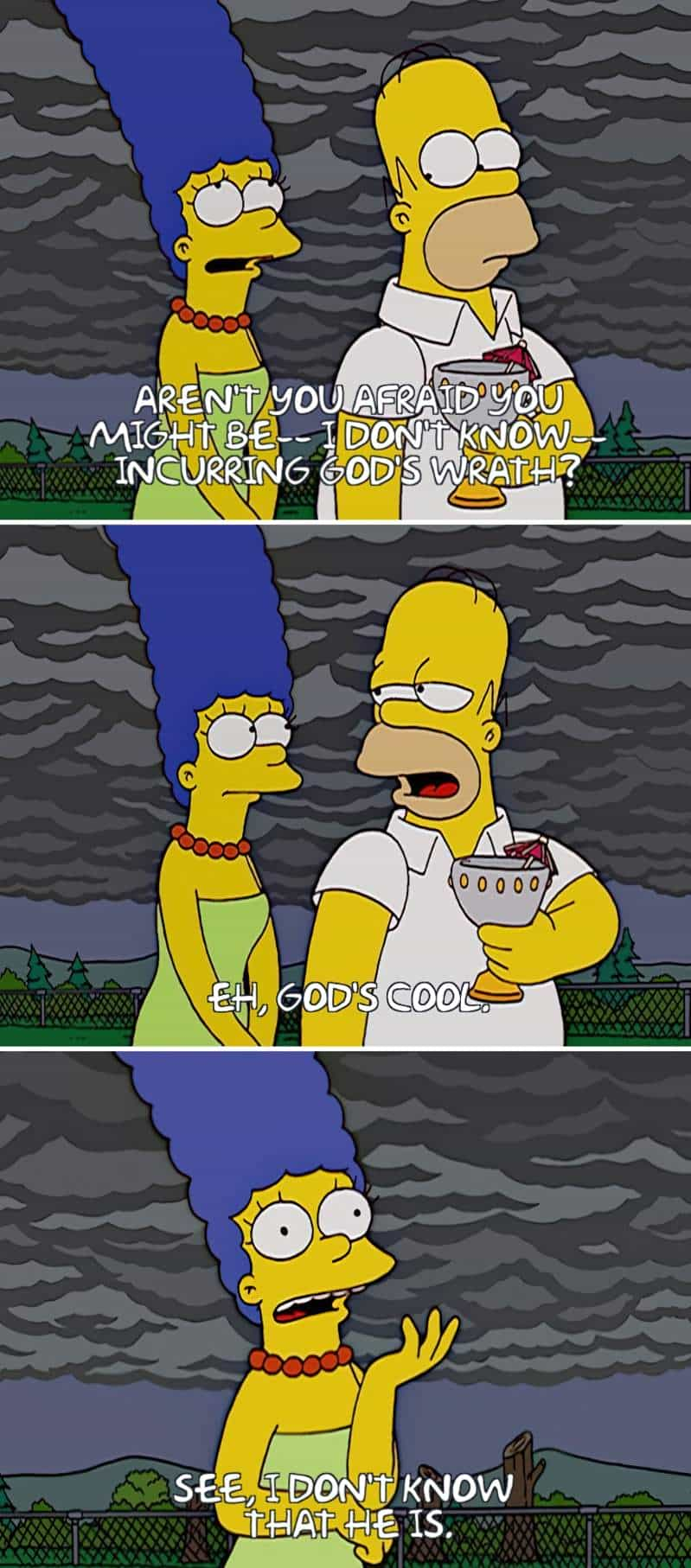
Like the Narnia Chronicles of C.S. Lewis, this is at its heart a Christian story. When Marna says that each folk has its history and each ‘its dispensation’ this very much reminds me of some Christian churches. dispensationalism as a distinct theological system began with John Nelson Darby (1800-82), chief organizer and leader of the Plymouth Brethren. Dispensationalism’s fundamental tenet is the separation of Israel and the church. Many churhes have abandoned the idea entirely. Others are still into it. According to some, a dispensation is a period of time in which the Lord has at least one authorized servant on the earth who bears the holy priesthood and the keys, and who has a divine commission to dispense the gospel to the inhabitants of the earth.
The author’s biographical background is relevant here: Maurice Gee was also the grandson of controversial Presbyterian-turned-Unitarian minister James Chapple. We know about this guy partly because Gee wrote a book about him called Plumb.
For a change, the mythology centers on a powerful man rather than a stupid woman responsible for upsetting the perfect utopian world (by eating an apple which no one actually told Eve/Lilith she wasn’t allowed to eat, and which Adam accepted, even though he, apparently, had the benefit of the direct word of God).
I normally use ‘Minotaur opponent’ indirectly to mean the big, evil, most powerful villain of the story but in this case Otis Claw has more than usual in common with the Greek monster, crossed with a dragon who guards treasure. Claw has built a prison (rather than a labyrinth) around the Halves of stone keeping the world in happy equilibrium and two rows of guards (standing in for the labyrinth) holding spears. Claw watches over it.
Maurice Gee is making full use of altitude when creating his fantasy landscape. The Stonefolk live underground, the Birdfolk live high above ground.
Here’s the thing about Chosen Ones: They’re at the mercy of evil characters who want to keep on doing evil. Susan’s life is in danger. The good thing about high fantasy is ‘high stakes’.
Nick has definitely absorbed the masculine idea that boys are meant to protect girls, but he learns to roll with what Susan wants because Susan is her own person with her own wishes, even if she is a girl. (1980s feminism.)
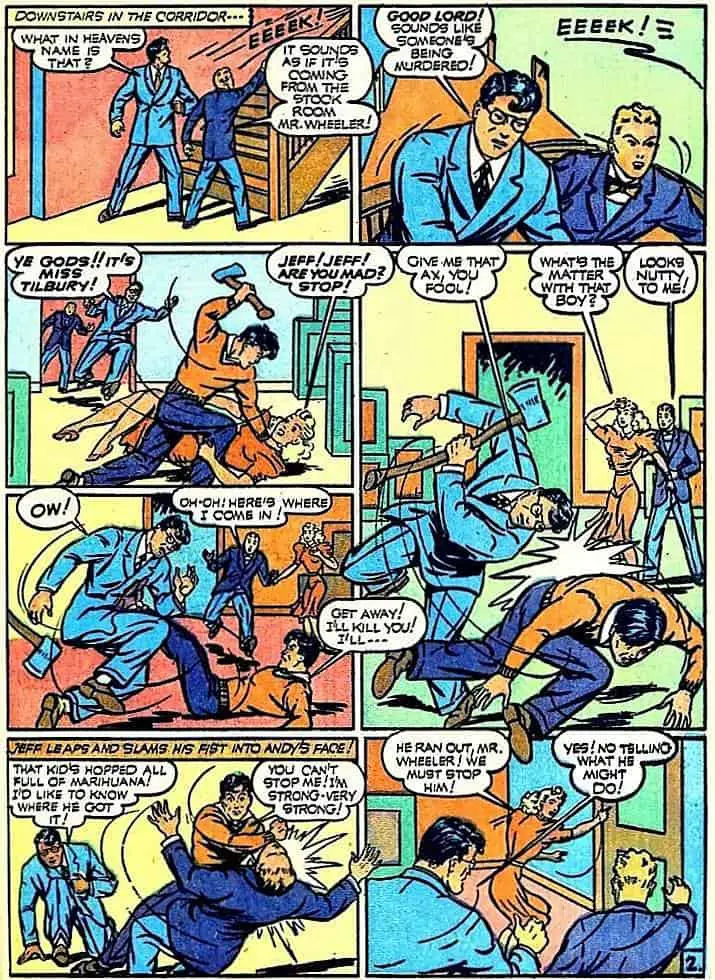
Until now, the kids have just wanted to return home but this story conforms to Joseph Campbell’s outline of the mythic story very neatly: Now they have a task, they accept the Call to Adventure. To borrow battle/sports terminology, they are switching from ‘shield’ to ‘sword’ mode. (From ‘defence’ to ‘offence’.)
Writers need to be careful not to create characters acting out of pure goodness of their hearts, especially when it comes to writing femme coded characters (a la The Giving Tree). Susan has already shown us she is forgiving and caring, by her reaction to Jimmy and her concern for his physical safety even after he sold her down the river (literally). So there has to be some reason why these two have to stay and help a community of people: They can’t get back home even if they want to because Deathguards won’t let them. Also, Planet Earth is in danger (not immediately, but eventually). Halfmen plan to pump their own smoke through the portal and suffocate humans.
Otis Claw is making the yellow air in Earth’s factories. This feels like mythopoeia around air pollution. This makes The Halfmen of O a book of its time. In the 1980s we were more worried about localised air pollution — and the hole in the ozone layer — than about global climate change.
The chapter ends on the cliffhanger of imminent battle, plus mention of a mysterious Bloodcat — we don’t know what that is yet, but it doesn’t sound great.
06 BLOODCAT
CHAPTER SUMMARY
This is mostly an action chapter, as everyone at Marna’s cave hospital is required to evacuate. Not every member of the band can travel quickly, case in point Jimmy Jaspers, who is very weak but who comically believes he can wring the baddie’s neck.
Although it is mostly action, there are some complex storyworld things going on: Marna turns out to be a self-sacrificial woman, and defeats the opponents by standing on a slope and bringing a landmass down upon them, killing most of the baddies, but also killing herself in the process. Since killing is a designated ‘bad’ thing, she has go go to the dark side of herself in order to do this. She places her own hand against the dark side of Susan’s mark. Unfortunately, Odo Cling was not among the killed. But now he’s on the other side of a gorge and has to take a long route to reach the party.
He and his bloodcat have Susan in their sights.
The goodies head off to the Birdfolk, pursued by Odo Cling and the scary big cat.
NOTES
This story is a masterclass in middle grade cliffhangers. The final sentence of the previous question introduces the concept of the Bloodcat; this is fleshed out in the next. Sounds simple, right? Easy to not do that, when you’re in the weeds writing.
Jimmy Jaspers changing the swear word ‘bloody’ to ‘bloddy’ is reminding me of my grandmother (same vintage, same part of the world) who also used to believe she was avoiding swear words altogether simply by changing the vowels of certain well-known swears.
07 MORNINGHALL
CHAPTER SUMMARY
The main characters reach Morninghall, which is where the Birdfolk live. When they first encounter the big part-man, part-bird (chimera) called Wanderer they’re not sure if he’s going to kill them or help them. Jimmy Jaspers is full of bluster and tells Wanderer to lay him an egg. It is now revealed that the birds are on their side. They have been surveilling proceedings from the air. They have appeared at this moment to stop Jimmy from killing one of their goats (he’s hungry). They learn Susan has the mark, and afford her due respect. They’re able to tell the main characters what the baddies have been up to — the bloodcat isn’t doing as it’s told even though Cling has been whipping it.
The birdfolk understand that it’s up to Susan to save the entire world and get back the stone so they escort the party into Morninghall. Susan feels some imposter syndrome when she’s treated as this big important person carrying out the original mission of Freeman Wells. It’s starting to overwhelm her a bit.
The beautiful big bird Wanderer carries Susan to a cave on a mountain and she retrieves the positive portion of the stones.
Wanderer isn’t able to carry her to the next part of the mission, which would require flying West of the mountains. They’re not allowed to fly that far due to some historical wrongdoing. Otherwise they’d just kill Otis Claw themselves (and then there’d be no story for Susan).
NOTES
When characters meet terrifying monsters there is often emphasis on their eyes. Non-human eyes tend to terrify us. Perhaps goat eyes are the worst, hence we think the devil takes the form of a goat. But in this scene it’s not the goat who is the perp, it’s the bird man, with emphasis on his terrible bird-like eyes.
Jimmy Jaspers feels increasingly like a B.F.G. archetype (a la Roald Dahl) In what is fundamentally a terrifying landscape, Jimmy adds comic relief, talking about food that gives him gas, imaginatively punching above his capabilities, calling the terrifying chimera a ‘hairy stork’.
Avian humanoids (people with the characteristics of birds) are a common motif in folklore and popular fiction, mainly found in Greek, Roman, Manipuri, Hindu, Persian mythology, etc.
Wikipedia, List of Avian Humanoids
Jimmy is like the B.F.G. beacuse at first he apepars to the child characters to be the main villain, but it is gradually revealed that there is another group of truly terrifying villains, and he is a victim of lateral violence. However, Jimmy Jaspers is bad enough that we happily accept that he will be the victim of slapstick violence. He brings it on himself, we know. This is how revenge works in children’s books. (It is meted out to those who behave poorly and comes from ‘the universe’.)
This story includes many elements from fairytale, as listed by Propp who describes the fairy-tale “ur-plot”. For instance, the ‘branding’ is Susan’s birthmark. There has already been ‘transference’ from another kingdom when they went through the portal. Now we have the gift of a feather from a mentor. Propp would call this plot point ‘Provision of Magical Aid’.
I’m slightly alienated in this chapter by Susan’s focus on her tangled hair. As someone with long hair myself, I feel the irritation at having a bird constantly tangle your hair would be the pain of it, rather than the fact it is tangled (ie. how it looks). Susan looks at the world and ‘could not believe she was the one who could save it’. Emphasis on the hair is probably the author’s way of trying to keep her real.
The big bird has been a big help to Susan, so without inventing some backstory in which the birds can only be of so much help, the reader may wonder why the birds can’t just save the day themselves, and if not that, take Susan and drop her exactly where she needs to be. So Maurice Gee solves that problem by briefly explaining some historical interdiction (another of Propp’s words) in which the birds are limited to a small area of this fantasy world. (An interdiction is when a fairytale character is given a warning.)
Humans have fantasised about riding on the backs of birds for a very long time.
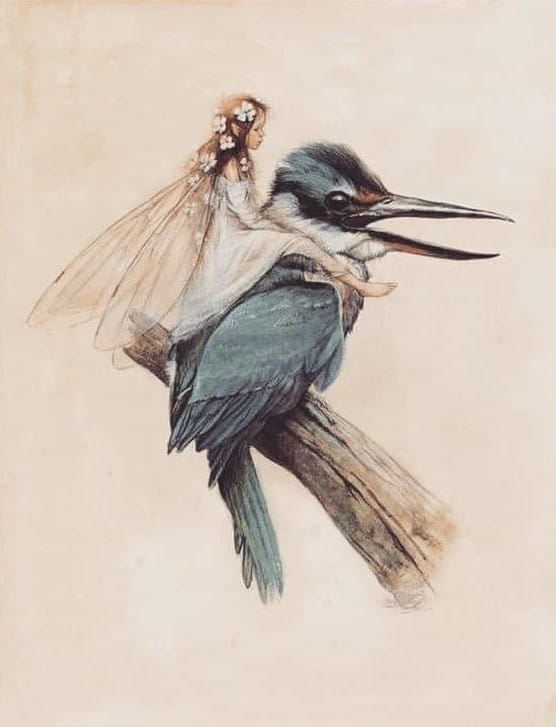
Folk and fairytale also tells us that we have long been afraid of being uplifted by massive birds.
08 UNDERHAND CHOP
CHAPTER SUMMARY
The point of view switches back to Nick, who like Susan in the previous chapter, muses over how it’s Susan’s job to save this entire world, and how what they’re doing will go down in history. Will he be a part of the story even though Susan’s the star?
They’re still under the care of the Birdfolk, who are allies.
Jimmy’s been making an axe while Susan’s away. Now uses this to chop down the bridge just as Odo Cling approaches the vulnerable party with his Bloodcat. Jimmy also knocks the Bloodcat off the cliff and into the gulf. All the while he’s giving cheek, which lightens the mood.
Susan is tired after her trip retrieving the stone. When she eventually shows it to Nick he thinks he looks like something from Woolworths which, in 1980s New Zealand, was a general store selling all sorts of things (don’t be thinking of modern Woolworths supermarkets in Australia, which are supermarkets). His response to this underwhelming thing tells us he’s feeling a bit left out. Susan’s withdrawing from him and he’s not the main character of this story.
NOTES
If this story were brought to screen, I’m definitely imagining an animated series and Jimmy Jaspers would look a bit like Gargamel from The Smurfs. There’s so much comic action in this chapter, it would hardly work as live action. But then I’m reminded of The River Wild, which is live action, and how the initially ineffectual father ends up ‘saving the day’. Jimmy has achieved his redemption in this chapter. We knew he would, right? He is also surprisingly agile, which only surprises because he’s been depicted as quite an old man. This is the Faster Than They Look trope combined with the elderly take on Acrofatic (in which fat characters are shown to be acrobatic).
09 THROAT OF THE UNDERWORLD
CHAPTER SUMMARY
The party keep walking, past sink holes and also past benign looking areas where ‘hungry things live’. They reach Wildwood. Two Stonefolk appear and creepily sniff around Susan’s arm. These Stonefolk are allies, however, though unfriendly. They want to help Susan with her mission. They give her a silk sleeve which won’t come off until she commands it. They give her silk stockings which work almost magnetically. The gear lets her shinny down the sheet side of the Throat. Its depth is measured in the number of heartbeats it takes to get down there. They’re guiding Susan to an old Stoneman whose job it is to guard the negative half of the stones. This entire process discombobulates her. She doesn’t know where she is after she’s escorted to the mouth of the cave by Seeker. Like the birds who are confined to a segmented arena inside the storyworld, the Stonefolk are limited by sunlight, which would kill them. Once returned to the surface, Susan initially feels terrible aloneness, but before the chapter ends she is reunited with her party.
NOTES
Jimmy is now fully redeemed in the eyes of the child main characters. Everyone likes a redemption arc. Personally, I still wouldn’t trust him.
Rather than feeling triumphant that he saved the party and killed the Bloodcat, Jimmy Jaspers laments the waste of meat and the loss of a good axe. This humour is ‘misplaced focus’ humour combined with character humour — I know plenty of older NZ men who would bemoan the lack of a favourite yard tool.
“Be careful. The sight alone could make you fall.” This is out of cosmic horror, in which a character can go mad simply by seeing something terrible and much, much bigger than our human brains are evolved to comprehend.
Nick senses the landscape wants to suck him in, like a hungry monster. This particular horror is reminiscent of post moon-landing horror, in which quicksand featured large in the TV I was watching growing up in the 1980s. Before humans landed on the moon, we weren’t sure the surface was solid. This seemed to provoke a certain kind of shared nightmare which found its home in horror fiction.
Along a mythic journey, the heroes will encounter many different characters, and the main suspense for the reader is waiting to see whether each character is an enemy or an ally. Mythic journeys have a tendency to feel like one damn thing after another, so writers add variety not only by trying to randomly alternate the enemies and allies, but also by creating enemies who at first appear to be friendly, and — as in this chapter — by creating allies who are actually pretty unfriendly. A message emerges: Always be wary. Not everyone appears as they seem.
The Stonefolk are creepy because they keep touching Susan without her consent. I wonder if this book were published today if Susan might tell them to get their ‘hands’ off her, or at least to ask before surprising her with their cold wetness, manipulating her body in the pitch dark of underground.
10 WINGS
CHAPTER SUMMARY
Now that the two halves of stone have been reunited inside Susan’s pouch, she is being called by the Motherstone. They’re now at a place called Shadyhome with the woodlanders but she needs to get there. Problem is, the baddies have blocked all the routes. There’s no way they can get to the Motherstone by land, as the cliff-paths are too narrow. So they take two days to make a hang-glider. Jimmy is scared of flying so (comically) believes it’d be safer to just go by land and kill Odo Cling. The others will fly using hang gliders and Jimmy will do that. Susan tries to persuade Jimmy not to risk his life fighting Odo Cling but Jimmy argues he still has some redeeming to do. So off he goes.
Once the hang-gliders are made, it’s time for Susan to practise flying as Nick’s been doing. But she’ s in a trance and fails to listen to Nick’s instructions. They argue. Nick gets mad at her. Susan explains she’s single-minded about getting to the Motherstone and has no mental space left for taking instruction.
All of this is leading up to the main danger: Like baby birds on their first flight, they must jump off Sheercliff. The name itself suggests extreme danger. Breeze, Brand, Nick and Susan disguise themselves as Halfmen by staining their limbs brown.
When the party reaches Deven’s Leap on Sheercliff, they are attacked and nearly
captured by Odo Cling and the Deathguards. Jimmy magically appears on the scene, successfully battles Odo Cling and wins, treating him as he would a chicken. (He is surely used to killing chickens.) Odo Cling grows smaller and smaller as he falls, again reminiscent of comic violence.
At the end of the chapter, Susan flies from Deven’s Leap. The ‘cliffhanger’ is pretty literal — we read on to find out if she made it safely to the bottom.
NOTES
Nick notices Susan is thinner and sick looking after emerging from a near-death experience to retrieve the other half of the stone. This trope is used quite a bit across storytelling though the most disturbing imagery is probably that of the emaciated Bella Swan, pregnant with Edward’s parasitic little vampire baby.
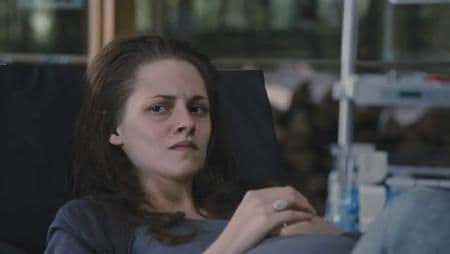
Perhaps the trope of the emaciated young woman is related to stories which cater to fears around pregnancy and childbirth. Naturally, this is a middle grade novel, Susan is too young to be pregnant, and I’m talking about the wider function of the trope across literature rather than its function in this particular story.
It’s Nick’s idea to make the hang-glider. He needs something to do in the story. Susan paints suns on them.
11 INTO THE CITY
CHAPTER SUMMARY
On the hang-gliders, Nick orders Susan to keep up, but Susan is happier to peel off and do her own thing. She is feeling distant from Nick, alone in the world because of her special-ness. So she flies to a nearby island alone, has a swim at the beach and washes off the brown stuff meant to camouflage her. (Often when this happens in a story it’s a kind of rebirth.) Sea Folk put Susan in a hulk which allows her to cross the poisoned river and get to the city.
She walks through the streets of a city which she codes as Hell and finds a black building which she just knows must be the headquarters of Odo Cling. Brown smoke is billowing out of it. The description of the city is quite disturbing, especially some imagery of a child biting a woman. She overhears Halfmen talking about killing and eating them. No longer camouflaged, Susan thinks a Halfman is watching her from a crowd but at the end of the chapter she realises it is in fact Nick, not a Halfman.
NOTES
The fantasy world so far has basically been a black and white dystopian version of the top part of the South Island of New Zealand, so it’s a surprise to me that the party will encounter a city. However, since this story is about pollution, I should’ve expected it.
When Susan is in the horrible black city, a version of Hell, she notes the sun has turned from yellow to red. This is an interesting cultural difference, because in other parts of the world (notably Japan but also Russia) the sun is coded as red rather than as yellow. In both cases, the sun is white, of course. And no matter where you are on Earth, you’re looking at the same sun. However, due to atmospheric differences the sun does look more yellow from New Zealand and more red from Japan. To a New Zealander, a red sun looks somewhat ominous.
12 MOTHERSTONE
CHAPTER SUMMARY
Susan and Nick go inside Otis Claw lair (The Pit):a big, dark place with a whole lot of sycophantic plebs in the crowd. Claw is supremely ugly, and has an old dog by his side who has been trained to sniff out the likes of Nick and Susan.
Claw gives Breeze and Brand the third degree.
Susan puts on the sleeves she received earlier, which allow her to climb up rock (and escape). Meanwhile, Nick tries to make himself anonymous in the crowd but unfortunately the dog sniffs him out. He tries to crack on to Claw that Susan is already dead, which upsets Breeze because she doesn’t realise Nick is tricking.
Fortunately, attention turns to the spectacle of Susan crawling across the roof to retrieve the precious, guarded stone. Claw wants her dead. When apparent no one’s spears or knives can reach her up there, Susan grabs the Motherstone and is saved by a magical orb of light which transports her down to the ground. She’s clearly untouchable, after placing the two halves of rock on her wrist.
Cling tries to strike a deal with Susan, saying they can share power. Susan isn’t interested in power, though. Being bad, Claw throws himself against the force field of goodness (light) and this kills him.
The Halfmen get a lighter punishment. It’s not really their own fault that they’re bad, so they fall into comas. The good and bad part of them is coming back into balance.
Susan and Nick walk away, now that the ticking clock is over. The city bears its original name of Manhome.
NOTES
This chapter reminds me of various other stories: The Wizard of Oz, The Witches by Roald Dahl (in which the witches themselves sniff out the child main character), Sleeping Beauty and also the Bible.
This is a religious view of humankind (in which Halfmen are the same): People are both good and bad, and ultimately choose for themselves whether they will do good or do bad. When the Halfmen wake up again later, they’ll have enough good in them to be able to make that choice.
Battles in stories precede epiphanies. In religious art, epiphanies are often depicted with rays of light. The light which saves Susan puts me in mind of religious art. This would put Susan in angelic position.
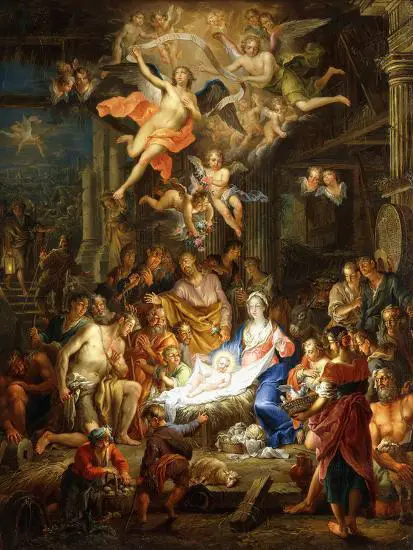
13 AN EXCHANGE OF GIFTS
CHAPTER SUMMARY
Susan and Nick make their way back to the mine shaft, where Jimmy Jaspers says he’s going to stay in this world. He has a few things to do, like re-build the bridge he destroyed. His redemption is thereby complete.
Earlier in the story, Woodlanders gave a small flower called Shy to Susan. If you sniff the flower, it has restorative powers.
Using Shy, Nick and Susan make their way back to the real world. Like the Narnia plot, they arrive back into a world in which no time has passed. However, Nick’s new sneakers are battered now and their hair is two inches longer than it was before, suggesting they’ve been away about half a year(?)
They walk hand in hand towards Susan’s home, confident that they’ll think of something to tell the parents.
NOTES
I’m a little worried about Susan taking Shy home to plant in New Zealand. It doesn’t often turn out well to plant introduced species willy nilly. Lupins are beautiful, and attract plenty of tourists to certain parts of NZ, but they’re an invasive species.
The ending is very much like the ending to The Lion, the Witch and the Wardrobe, except Maurice Gee adds the detail of the hair and the beaten up sneakers. These function as talismans, reminding the characters (and assuring the readers) that this wasn’t some made up thing — it really happened within the world of the story.
